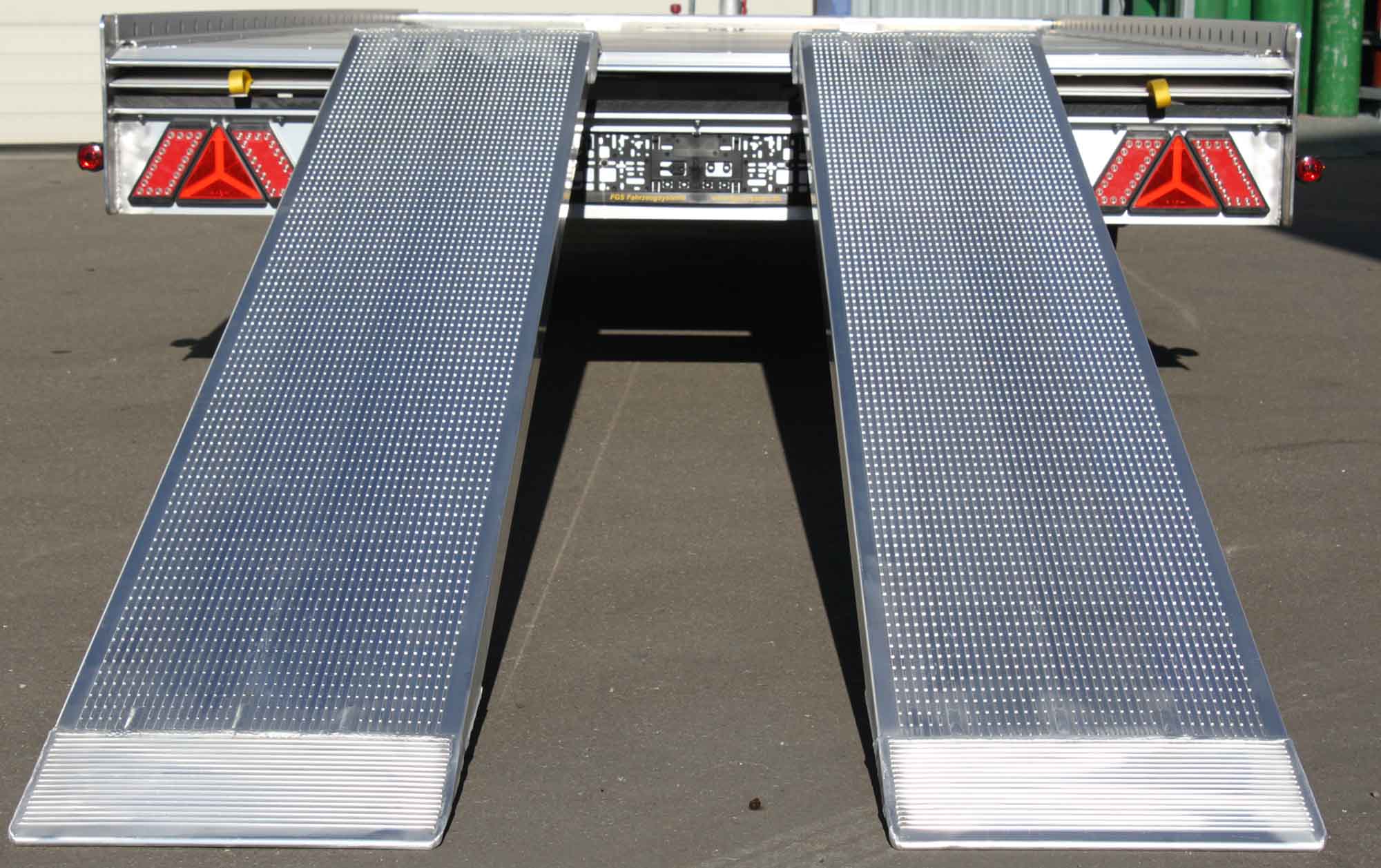How do you choose the right ramp?

Tips when purchasing a ramp
When you want to buy a ramp, always get advice from a competent company. A specialist should come to your premises in order to take a look at the vehicle, the loading height, the type of vehicle to be loaded and the distribution of weight. Good guidance on this is:
Length ramp
The length of drive-on ramps is determined based on loading height and ground clearance. For vehicles with high ground clearance and good climbing ability such as tracked vehicles, tractors and all-terrain vehicles, a suitable drive-on angle would be 3.5 times the loading height. Vehicles with poor climbing ability and/or low ground clearance will require 5 to 6 times the loading height. Ramps of this length are used for passenger vehicles, forklift trucks and scissor lift platforms.
Example: If a caterpillar crane is to be loaded onto a truck with a loading height of 800 mm, you will need drive-on ramps of 2800 mm or longer.
Carrying capacities
Naturally, you will also have to look at the desired carrying capacity. It is not always just the weight of the vehicle to be loaded that this is based on. Important questions to be asked include: How is the weight distributed (a forklift truck has a counterweight at the rear)? How long are the ramps and what is the axle spacing or the length of the tracks? Is there a point load?
Running Surface
The running surface of drive-on ramps is determined based on the type of tyre or wheel. Choosing the right running surface will ensure that there is sufficient grip during loading and unloading. Choosing the wrong ramp can result in the vehicle slipping off the running surface if there is a lot of mud on the tracks or if the tracks are made of steel, for example.
Other important points
How can you secure ramps to the vehicle in order to ensure that they don’t come loose during loading? When should you use hinged and folding drive-on ramps? When should you choose a spring system or hydraulic system? And so there are even more questions….. In short too many for you to deal with yourself and that brings us back to step 1. Call in a specialist who will ensure that you are able to continue using your drive-on ramps safely for as long as possible!


